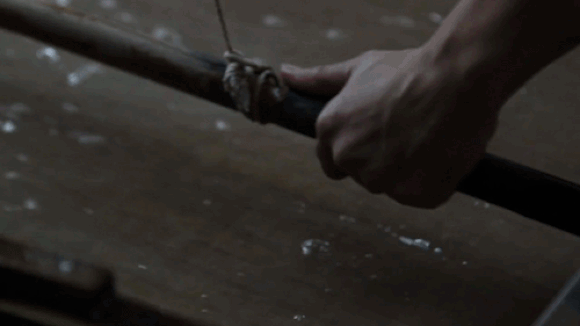
The traditional art of Japanese paper making has a history that dates back well over 1,000 years. Kurotani in Kyoto is one of the oldest paper-making villages where the tradition continues in earnest, with artisans continuing the ancient practice of paper skimming, classed as an intangible cultural asset by Kyoto Prefecture.
Like all Japanese arts, the process of creating washi has a precise and meditative quality about it. From collecting and preparing the raw materials to filtering and pressing the paper, the movements of these craftspeople and the life they lead is truly a sight to behold.
Japanese filmmaker Takashi Kuroyanagi has captured these moments in a beautiful five-minute film that takes us through the process from beginning to end and the result is breathtaking in its meditative beauty. If you’re looking for a way to take five minutes to relax in a busy day, this video is the calming tonic you need.
Japanese handmade paper is known as washi; wa meaning Japanese and shi meaning paper. Kurotani washi is the subject of this film, which is set in winter, the traditional season for paper-making due to the fact that cold inhibits the growth of bacteria and pure, cold water is essential to the process.
From harvesting the field of paper mulberry to stripping the bark and pressing and drying the materials, the film transports us to a slow life where community and quiet meditation lead the way, reminding us to stop and appreciate life and the beauty of creation.
Now it’s time to make yourself a cup of green tea, put your feet up and enjoy five minutes of absolute beauty and relaxation.
If the video has piqued your interest in washi, read on for a look at the steps involved in the production process below.
▼ The kozo (paper mulberry) is indigenous to the south of Japan and is known for its strong fibres. Here the branches are steamed, dried and then stripped for their bark.
▼ The bark strips are then bundled by people of all ages to be cleaned indoors away from the cold. There’s no age discrimination at this workplace!
▼ The bark is shaved, revealing the inner fibres which will be used to make washi.
▼ The fibres are then boiled to remove any starch, fats or tannins.
▼ Then it goes into a bath of cold running water, where impurities are picked out by hand.
▼ The fibres are pounded for an hour in large vats and then a screen is dipped into the paper pulp slurry several times to form a sheet.
▼ Creating the desired thickness of the paper depends on the number of times the screen is dipped into the mix. This is an art that can only be determined by the skilled eye and hands of the craftsman.
▼ The wet sheets of paper are removed from the screen and then stacked to be pressed the following day. The use of string and a binding agent ensures the papers don’t stick together.
▼ Each individual paper is then separated and pasted onto drying boards to dry naturally in the sun.
▼ Finally we get to the paper sheet we see in stores today. The even thickness and fine fibres show the high quality of their product.
Washi is so durable that it can be used for all kinds of things, including lanterns, shoji (sliding paper screens) and fusuma (sliding paper doors). Dyeing opens up even more options for its use.
It’s amazing to think that the heart of this product is actually an all-natural material. Using local water and plants in the process creates something more than just paper—it creates a special bond between artisan and community; a tradition that we hope to see continue for centuries to come.
Source and screenshots: Kuroyanagi Takashi Vimeo

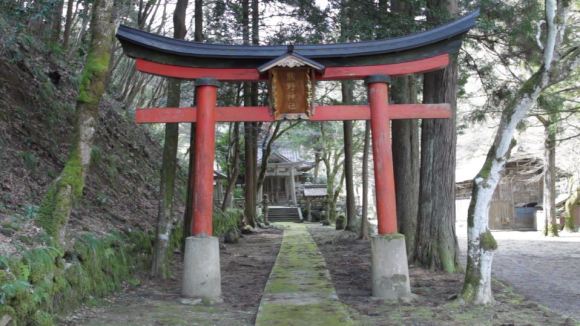
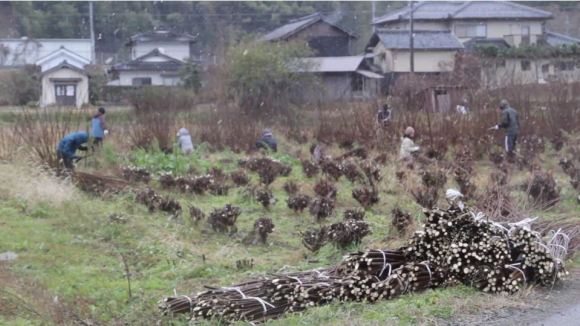
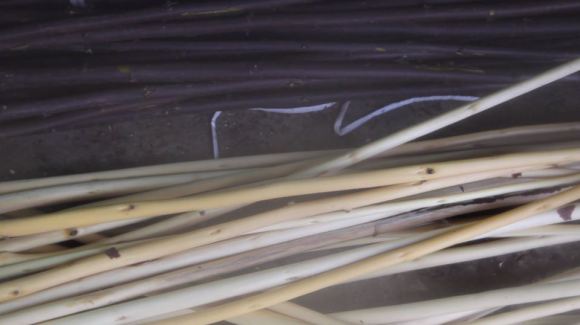
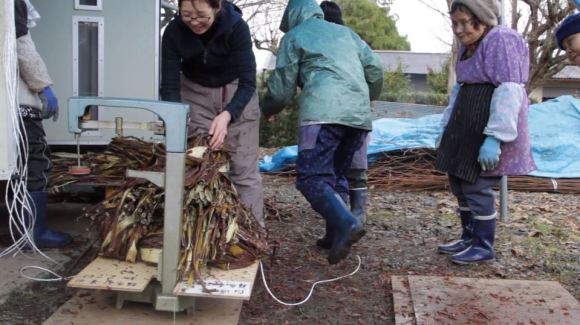

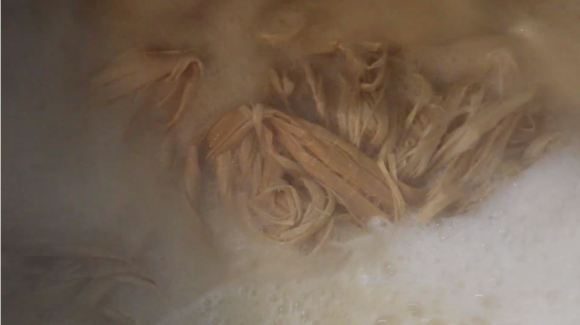
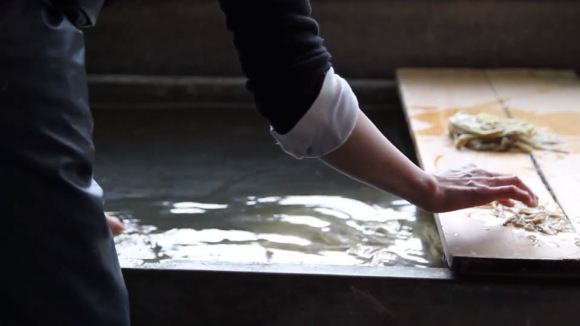
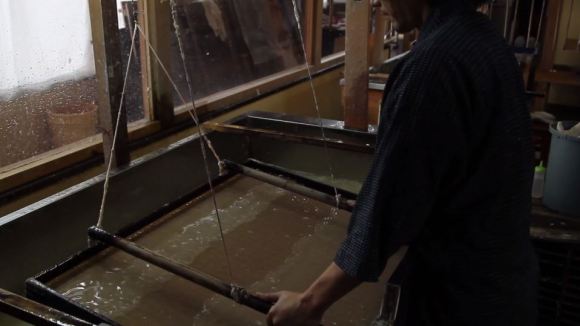
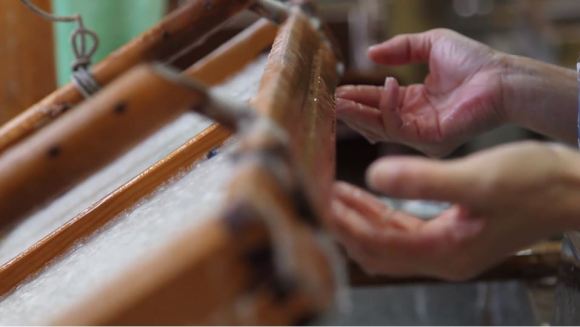

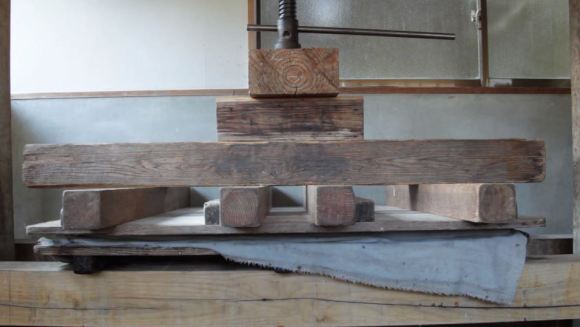
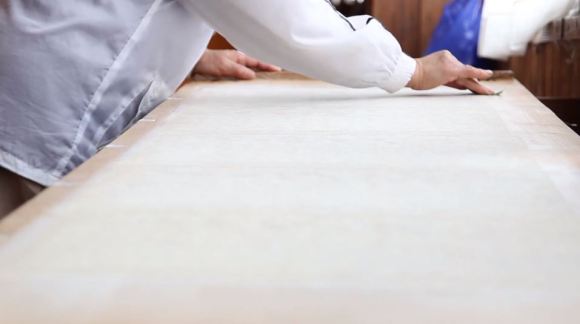
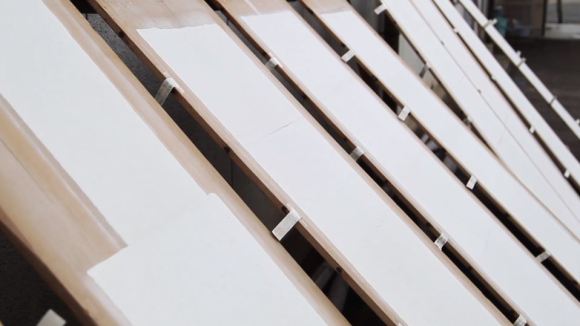
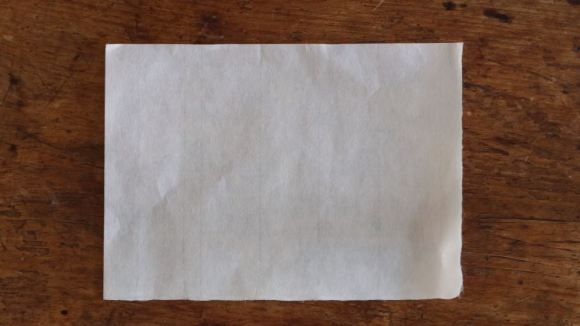
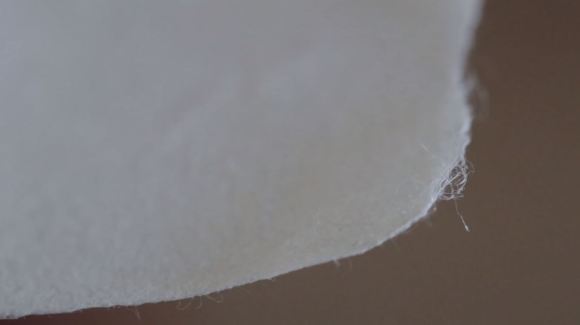
 Samurai parkas for men feature traditional washi Japanese paper details
Samurai parkas for men feature traditional washi Japanese paper details Traditional Japanese washi paper features Totoro and friends in 20 beautiful seasonal scenes
Traditional Japanese washi paper features Totoro and friends in 20 beautiful seasonal scenes Mino City’s traditional paper lanterns illuminate its historic streets this fall
Mino City’s traditional paper lanterns illuminate its historic streets this fall Keanu Reeves teams up with Suntory for new series exploring Japanese whisky and monozukuri【Video】
Keanu Reeves teams up with Suntory for new series exploring Japanese whisky and monozukuri【Video】 Ramen restaurant’s English menu prices are nearly double its Japanese ones, denies discriminating
Ramen restaurant’s English menu prices are nearly double its Japanese ones, denies discriminating Things get heavy with the Gold Lucky Bag from Village Vanguard
Things get heavy with the Gold Lucky Bag from Village Vanguard Dragon Quest Burgers and Slime drinks are coming to McDonald’s Japan【Video】
Dragon Quest Burgers and Slime drinks are coming to McDonald’s Japan【Video】 Here’s what our bachelor writers ate over the New Year’s holiday in Japan
Here’s what our bachelor writers ate over the New Year’s holiday in Japan Nearly one in ten young adults living in Japan isn’t ethnically Japanese, statistics show
Nearly one in ten young adults living in Japan isn’t ethnically Japanese, statistics show Tokyo fish market breaks New Year auction record as single fish sells for over 500 million yen【Vid】
Tokyo fish market breaks New Year auction record as single fish sells for over 500 million yen【Vid】 Top Japanese cosplayer Enako returns to Comiket after 6 years, creates mayhem with admirers
Top Japanese cosplayer Enako returns to Comiket after 6 years, creates mayhem with admirers Comparing two Starbucks fukubukuro shows just how different lucky bags can be
Comparing two Starbucks fukubukuro shows just how different lucky bags can be Starbucks Japan adds a Shine Muscat Grape Frappuccino to the menu for a limited time
Starbucks Japan adds a Shine Muscat Grape Frappuccino to the menu for a limited time 7 great places to see Mt. Fuji from without having to climb it
7 great places to see Mt. Fuji from without having to climb it Starbucks Japan ready to get Year of the Horse started with adorable drinkware and plushies【Pics】
Starbucks Japan ready to get Year of the Horse started with adorable drinkware and plushies【Pics】 Japanese beef bowl chain Sukiya’s 2026 Smile Box lucky bag basically pays for itself
Japanese beef bowl chain Sukiya’s 2026 Smile Box lucky bag basically pays for itself Hayao Miyazaki says Happy New Year to Studio Ghibli fans with new art for Year of the Horse
Hayao Miyazaki says Happy New Year to Studio Ghibli fans with new art for Year of the Horse Cup Noodle tries an authentic Jiro-style ramen, but something’s not quite right
Cup Noodle tries an authentic Jiro-style ramen, but something’s not quite right The best Starbucks Japan Frappuccinos we want to drink again in 2026
The best Starbucks Japan Frappuccinos we want to drink again in 2026 We revisited Sweets Paradise after a decade to see if Japan’s dessert buffet still delivers
We revisited Sweets Paradise after a decade to see if Japan’s dessert buffet still delivers That time Seiji called JASRAC to ask why he didn’t get paid royalties for his song being on TV
That time Seiji called JASRAC to ask why he didn’t get paid royalties for his song being on TV We found possibly the quietest Japanese-style hotel in Tokyo’s bustling Shinjuku district
We found possibly the quietest Japanese-style hotel in Tokyo’s bustling Shinjuku district Pizza Hut Japan’s hot lucky bags are perfect for a New Year’s pizza party
Pizza Hut Japan’s hot lucky bags are perfect for a New Year’s pizza party Japan’s oldest largetooth sawfish in captivity back on display in Mie Prefecture
Japan’s oldest largetooth sawfish in captivity back on display in Mie Prefecture 7-Eleven Japan starts new temporary luggage storage service in over 300 branches
7-Eleven Japan starts new temporary luggage storage service in over 300 branches Disillusionment at Tsukiji’s tourist-target prices led us to a great ramen restaurant in Tokyo
Disillusionment at Tsukiji’s tourist-target prices led us to a great ramen restaurant in Tokyo Starbucks teams up with 166-year-old Kyoto doll maker for Year of the Horse decorations【Photos】
Starbucks teams up with 166-year-old Kyoto doll maker for Year of the Horse decorations【Photos】 Tokyo considering law requiring more trash cans following litter increase in heavily touristed area
Tokyo considering law requiring more trash cans following litter increase in heavily touristed area Tokyo’s Tsukiji sushi neighborhood asks tour groups to stay away for the rest of the month
Tokyo’s Tsukiji sushi neighborhood asks tour groups to stay away for the rest of the month Tokyo event lets you travel back in time, for free, to celebrate 100 years since Showa era start
Tokyo event lets you travel back in time, for free, to celebrate 100 years since Showa era start Japan may add Japanese language proficiency, lifestyle classes to permanent foreign resident requirements
Japan may add Japanese language proficiency, lifestyle classes to permanent foreign resident requirements Sanrio theme park in Japan announces plans to expand into a Sanrio resort
Sanrio theme park in Japan announces plans to expand into a Sanrio resort Stamina-destroying “Paralysis Noodles” are Tokyo’s newest over-the-top ramen innovation
Stamina-destroying “Paralysis Noodles” are Tokyo’s newest over-the-top ramen innovation Survey asks foreign tourists what bothered them in Japan, more than half gave same answer
Survey asks foreign tourists what bothered them in Japan, more than half gave same answer Japan’s human washing machines will go on sale to general public, demos to be held in Tokyo
Japan’s human washing machines will go on sale to general public, demos to be held in Tokyo Japan’s deadliest food claims more victims, but why do people keep eating it for New Year’s?
Japan’s deadliest food claims more victims, but why do people keep eating it for New Year’s? We deeply regret going into this tunnel on our walk in the mountains of Japan
We deeply regret going into this tunnel on our walk in the mountains of Japan Studio Ghibli releases Kodama forest spirits from Princess Mononoke to light up your home
Studio Ghibli releases Kodama forest spirits from Princess Mononoke to light up your home Major Japanese hotel chain says reservations via overseas booking sites may not be valid
Major Japanese hotel chain says reservations via overseas booking sites may not be valid Put sesame oil in your coffee? Japanese maker says it’s the best way to start your day【Taste test】
Put sesame oil in your coffee? Japanese maker says it’s the best way to start your day【Taste test】 No more using real katana for tourism activities, Japan’s National Police Agency says
No more using real katana for tourism activities, Japan’s National Police Agency says Starbucks Japan reveals new sakura drinkware collection, inspired by evening cherry blossoms
Starbucks Japan reveals new sakura drinkware collection, inspired by evening cherry blossoms Updated cherry blossom forecast shows extra-long sakura season for Japan this year
Updated cherry blossom forecast shows extra-long sakura season for Japan this year
Leave a Reply